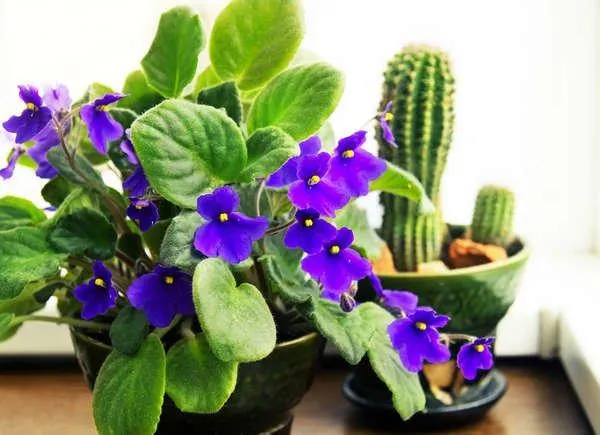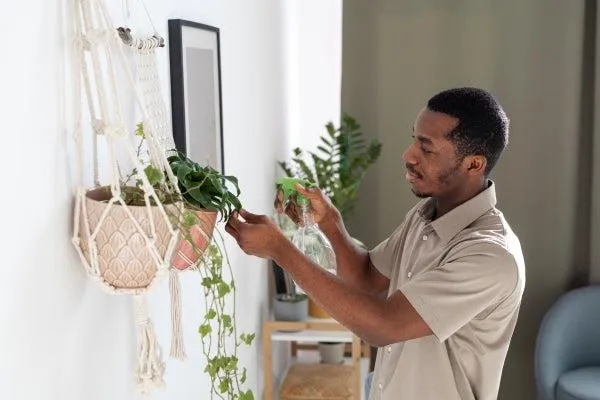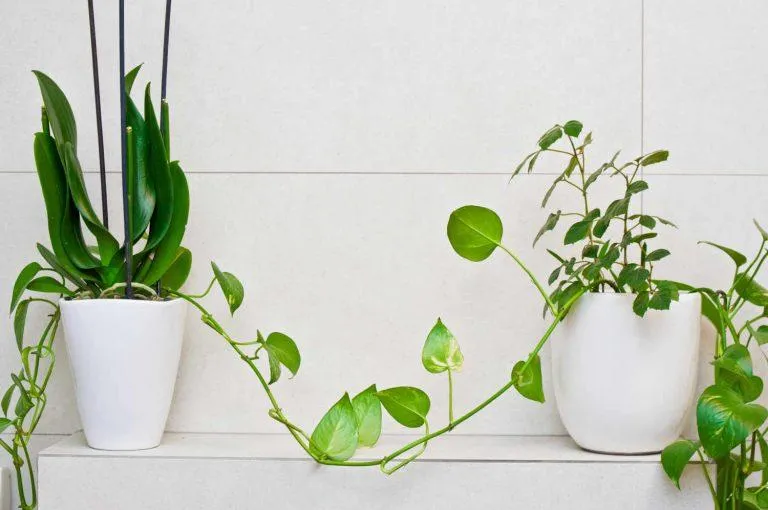All You Need to Know About Choosing and Caring for Pretty Hanging Plants
If you’re searching for “pretty hanging plants,” you likely want to spruce up your outdoor or indoor spaces with some beautiful greenery. In this article, I’ll cover all the essential info needed to select, care for, and enjoy lovely hanging plant varieties.
Popular Plant Choices for Hanging Baskets
From my experience as an avid gardener, here are some of the prettiest and most common hanging plant options:
- Ivy. English ivy is practically immortal and thrives in shade or sun. Its vines cascade beautifully over the sides of pots.
- Petunias. These flowering beauties come in a rainbow of colors and are very low maintenance. Petunias thrive in hanging baskets.
- Fuchsias. With their dangling flowers, fuchsias are a showstopper. They bloom all summer long in partial shade.
- Ferns. Delicate-looking ferns like Boston and English add lovely greenery. Choose types suited to your climate.
- Begonias. Wax and fibrous begonias come in many colors and leaf shapes. They love shade and moisture.
Factors to Consider When Selecting Hanging Plants
When choosing plants, consider these key factors:
- Light conditions. Match plants to the sunlight in your space (full sun, part shade, or full shade).
- Hardiness zone. Select types hardy to your region to avoid winter losses.
- Growth habit. Choose vines, trailers, or compact varieties depending on your container dimensions.
- Color scheme. Pick coordinating or contrasting hues to tie your space together.
- Bloom time. Mix and match long-blooming or seasonal plants for year-round interest.
Tips for Planting Hanging Baskets
To get your pretty plants off to a good start, follow these planting guidelines:
- Select a basket with drainage holes and line it with nursery pot feet or gravel for moisture control.
- Fill the basket 3/4 full with a well-draining potting mix like peat moss or coir fiber.
- Gently remove young plants from nursery pots being careful not to disturb roots.
- Space plants evenly around the perimeter with the base of the stems near the basket rim.
- Backfill soil and firm gently while watering to remove air pockets.
- Water thoroughly, then hang in the chosen spot using sturdy hardware.
Caring for Hanging Basket Plants
With the right care, your pretty plants will thrive all season long. Here are some tips:
- Water daily or when the top inch of soil is dry. Early morning is best to avoid rot.
- Fertilize every 2-3 weeks with a liquid product for containers.
- Prune regularly to encourage bushy growth and repeat blooms on annuals.
- Watch for pests and treat immediately if spotted like thrips on petunias.
- Bring baskets inside before frost to extend their beauty indoors with windowsill care.
- Replace annuals each spring, but perennials can stay in baskets year after year.
Hanging Basket Display Ideas
Now that you’ve selected pretty plants, here are some cool ways to show them off:
- Hang single baskets or clusters from porch ceilings, fences, or trees.
- Line a wall with plants in graded heights for visual interest.
- Use macrame hangers or swag kits to create draping baskets over doors.
- Decorate railing tops or stairways with flowers spilling over the edges.
- Get creative placing combinations near outdoor lighting for nighttime effect.
I hope these tips help answer your questions about choosing lovely hanging plants. Feel free to experiment as you learn your spot’s conditions. Pretty plantings can totally transform a space!

Dealing With Pests and Diseases
No matter how well you care for plants, issues may arise. Here are some common problems hanging basket owners face along with solutions:
Aphids: The green or black soft-bodied pests suck plant juices. Use insecticidal soap or neem oil to knock ’em out, dude!
Thrips: Tiny pale insects cause leaf spots and flowers to curl. Spray regularly with insect growth regulator to curb the critters.
Powdery mildew: A white fungal bloom on leaves is no fun. Prune off affected areas and use a preventative copper fungicide on new growth.
Botrytis/gray mold: Fuzz appears during rainy periods. Improve air circulation and reduce watering to help prevent this bummer disease.
Leggy growth: Over time, inadequate sun creates lanky stems. Get your plant some rays, rotate the pot weekly, or replace annuals as needed.
Catching pests or diseases early gives the best chance of winning the plant battle without casualties. Keep a close eye out!

Frequently Asked Questions
Now let’s look at some additional concerns hanging basket owners may have:
What’s the best time of year to start hanging baskets? Late spring once nighttime temps are reliably above 50°F is ideal. Stagger plantings for continuous blooms.
How do I keep my baskets looking good all summer? Staged pruning, deadheading, fertilizing, and pest control will maintain their gorgeous display.
Should I bring baskets inside for winter? You can overwinter tropical types indoors, but hardy perennials may do fine outdoors with protection.
Any hanging gardening hacks? Self-watering reservoirs or irrigation drippers are kinda neat. Just remember to check moisture levels if using auto systems.
How do I revive sad looking plants? Trim back leggy growth, repot in fresh soil, fertilize weakly, protect from sun/wind, and gradually increase water as new growth appears.
I hope these answers help cover any concerns or questions you may have had! Let me know if any other issues arise with your hanging beauties.

Metrics of Popular Hanging Plant Varieties
| Plant | Size | Light Needs | Watering Frequency | Other Care Tips |
|---|---|---|---|---|
| Pothos | Trailing vines up to 10 feet | Low to medium light | Allow soil to dry slightly between waterings | Thrives in high or low humidity, tolerant of neglect |
| Philodendron | Fan shaped leaves up to 2 feet | Medium to bright indirect light | Water when top inch of soil is dry | Humidity loving, avoid direct sun, prune to shape |
| English Ivy | Trailing vines any length | Low to bright light | Water when top inch of soil is dry | Very hardy, tolerant of low light and dry conditions |
| Spider Plant | Clumping foliage up to 2 feet | Bright indirect light | Allow soil to dry slightly between waterings | Tolerates neglect, produces baby plants on long stems |
FAQ
-
What sorts of plants grow well hanging?
Pothos, philodendrons, english ivy, and spider plants grow like crazy hanging in a sunny spot. They’re pretty easy to care for and don’t need a whole lot of sunlight.
-
How do I care for hanging plants?
To keep hanging plants happy, give them lots of indirect sunlight and let the soil dry out somewhat between waterings. You can use fertilizer during the growing season, but it isn’t totally necessary. Avoid overwatering – that’s the number one cause of hanging plant problems apparently!
-
What’s the best way to start new hanging plants?
Basically, you have a couple options for new hanging plants. You can buy small potted plants and watch them grow bigger over time. Or try starting with cuttings from other hanging plants you might have – just put the trimmings in water until roots form. Either way works, so go with whatever fits your budget or what materials you’ve got on hand I guess!
-
How do I prevent my hanging baskets from drying out?
To stop hanging baskets from drying out too fast, you’ll want to use a good potting mix that retains moisture well. Mulching the top with wood chips or gravel can help too. Come to think of it, grouping several hanging pots together may also keep the moisture in – they’ll create their own little microclimate. You might have to water more often until they get established though.
-
What kind of pots work best for hanging plants?
Those plastic or ceramic hanging baskets you see at the garden center work great, but you’ve got options. Bag-likehanging pots with drainage holes, empty wine bottles, and even repurposed baskets or containers can all work if they’ve got a way to drain excess water. As long as your plant has room to grow and drain, it’ll be happy! Get creative with what you’ve got on hand.
-
Will my hanging plants be okay outside in the winter?
Unless you’re in a really warm climate, most hanging plants won’t survive a hard frost. Come fall, it’s best to bring potted hanging plants like petunias and verbena indoors before any freezing temps. Tender types like Boston ferns and English ivy can overwinter as houseplants with less sunlight. Hardier vines like wisteria may stay outdoors depending where you live. So check the planting zone – that’ll give you an idea what’s winter-hardy outside in your area.
In summary, hanging plants are a fantastic way to add green, and they basically take care of themselves. As long as they get adequate sun and moisture, they’ll grow awesome. Be sure drainage is good too though – no one wants a saturated mess dripping down! With a little TLC, your hanging baskets will look stunning all season.

